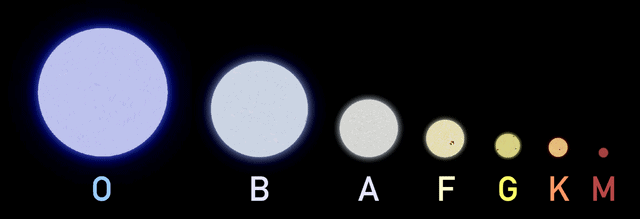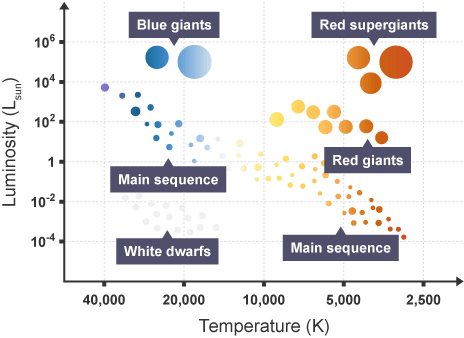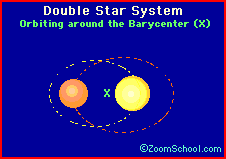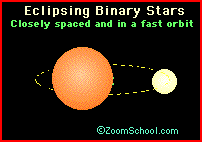Content Scribble
Stars
Our Sun
- The sun is the nearest star to earth.
- The sun is a bright yellow dwarf star
- The sun is about 4.6 billion years old.
- The sun belongs to the Milky Way Galaxy.
- Only 8.5 light-minutes away from Earth.
- The sun contains 98% of all the mass of the solar system.
- It is composed of Hydrogen and a smaller amount of helium.
- Inside the sun, hundreds of huge nuclear explosions occur each second.
- Stars can’t be seen during the day because the sun blinds us from seeing them.
- Distance in space is measured in light years.
- Galaxies are a huge collection of stars.
Types of stars:

Stars are classified by their spectra (the elements that they absorb) and their temperature. There are seven main types of stars. In order of decreasing temperature, O, B, A, F, G, K, and M.
An easy mnemonic for remembering these is: “Oh be a fine guy/girl, kiss me.”
Life Cycle of a Star

- Stars are born in clouds of hydrogen gas and dust called nebulae. Stars produce energy by nuclear fusion. Hydrogen gas atoms fuse together to form helium atoms. A lot of heat is produced in the fusion reaction which is emitted by the star. Large mass stars are very hot, and emit large amounts of heat but they have relatively short lifetimes.
- Most stars, including the sun, are “main sequence stars,” fueled by nuclear fusion converting hydrogen into helium. For these stars, the hotter they are, the brighter. These stars are in the most stable part of their existence; this stage generally lasts for about 5 billion years.
- As stars begin to die, they become giants and supergiants (above the main sequence). These stars have depleted their hydrogen supply and are very old. The core contracts as the outer layers expand. These stars will eventually explode (becoming a planetary nebula or supernova, depending on their mass) and then become white dwarfs, neutron stars, or black holes (depending on their mass).
- Smaller stars (like our Sun) eventually become faint white dwarfs (hot, white, dim stars) that are below the main sequence. These hot, shrinking stars have depleted their nuclear fuels and will eventually become cold, dark, black dwarfs.
Birth
- Gases fall into the center of a cloud
- A protostar is formed but it is not yet hot.
- Gases spin to form a rotating disc. Planets form in this disc.
- The protostar in the middle of the disc collects more hydrogen.
- The squeezing air together (compression) of gases causes the gases in the protostar to heat up.
- When the temperature is hot enough the hydrogen gas is squeezed together to form an atomic fusion reaction.
- A star is born.
Hydrogen (Nuclear fusion) = Helium + Energy
The colour of a star shows its temperature - hot, bright stars are blue, very small, colder or old dying stars are red.

Main Sequence Stars – Young Stars
Main sequence stars are the central band of stars on the Hertzsprung-Russell Diagram. These stars’ energy comes from nuclear fusion, as they convert Hydrogen to Helium. Most stars (about 90%) are Main Sequence Stars. For these stars, the hotter they are, the brighter they are. The sun is a typical Main Sequence Star.
Dwarf Stars
Dwarf stars are relatively small stars, up to 20 times larger than our sun and up to 20,000 times brighter. Our sun is a dwarf star.
Yellow Dwarf
Yellow dwarfs are small, main sequence stars. The Sun is a yellow dwarf.
Red Dwarf
A red dwarf is a small, cool, very faint, main sequence star whose surface temperature is under about 4,000 K. Red dwarfs are the most common type of star. Proxima Centauri is a red dwarf.
Giant and Supergiant Stars – Old, Large Stars
Red Giant
A red giant is a relatively old star whose diameter is about 100 times bigger than it was originally, and had become cooler (the surface temperature is under 6,500 K). They are frequently orange in color. Betelgeuse is a red giant. It is about 20 times as massive as the Sun about 14,000 times brighter than the Sun, and about 600 light-years from Earth.
Blue Giant
A blue giant is a huge, very hot, blue star. It is a post-main sequence star that burns helium.
Supergiant
A supergiant is the largest known type of star; some are almost as large as our entire solar system. Betelgeuse and Rigel are supergiants. These stars are rare. When supergiants die they supernova and become black holes.
Faint, Virtually Dead Stars
White Dwarf
A white dwarf is a small, very dense, hot star that is made mostly of carbon. These faint stars are what remains after a red giant star loses its outer layers. Their nuclear cores are depleted. They rare about the size of the Earth (but tremendously heavier)! They will eventually lose their heat and become a cold, dark black dwarf. Our sun will someday turn into a white dwarf and then a black dwarf. The companion of Sirius is a white dwarf.
Brown Dwarf
A brown dwarf is a “star” whose mass is too small to have nuclear fusion occur at its core (the temperature and pressure at its core are insufficient for fusion). A brown dwarfs is not very luminous. It is usually regarded as having a mass between 10^28 kg and 84 * 10^28.
Neutron Star
A neutron star is a very small, super-dense star which is composed mostly of tightly-packed neutrons. It has a thin atmosphere of hydrogen. It has a diameter of about 5-16 km and a density of roughly 10^15 gm/cm^3.
Pulsar
A pulsar is a rapidly spinning neutron star that emits energy in pulses.
*Binary Stars
Double Star
A double star is two stars that appear close to one another in the sky. Some are true binaries (two stars that revolve around one another); others just appear together from the Earth because they are both in the same line-of-sight.

Binary Star
A binary star is a system of two stars that rotate around a common center of mass (the barycenter). About half of all stars are in a group of at least two stars.
Polaris (the pole star of the Northern Hemisphere of Earth) is part of a binary star system.

Eclipsing Binary
An eclipsing binary is two close stars that appear to be a single star varying in brightness. The variation in brightness is due to the stars periodically obscuring or enhancing one another. This binary star system is tilted (with respect to us) so that its orbital plane is viewed from its edge.

X-Ray Binary Star
X-ray binary stars are a special type of binary star in which one of the stars is a collapsed object such as a white dwarf, neutron star, or black hole. As matter is stripped from the normal star, it falls in the collapsed star, producing X-rays.
*Variable Stars – Stars that Vary in Luminosity
Cepheid Variable Stars
Cepheid variables are stars that regularly pulsate in size and change in brightness. As the star increases in size, its brightness decreases; then, the reverse occurs. Cepheid Variables may not be permanently variable; the fluctuations may just be an unstable phase the star is going through. Polaris and Delta Cephei are examples of Cepheids.

Mira Variable Star
A Mira variable star is a variable star whose brightness and size cycle over a very long time period, in the order of many months. Miras are pulsating red giants that vary in magnitude as much as a factor of many hundred (by 6 or 8 magnitudes). Mira variables were named after the star Mira, whose variations were discovered in 1596.
Galaxies
Galaxies are sprawling systems of dust, gas, darkmatter, and anywhere from a million to a trillion stars that are held together by gravity. Nearly all large galaxies are thought to also contain supermassive black holes at their centers. In our own galaxy, the Milky Way, the sun is just one of about 100 to 400 billion stars that spin around Sagittarius A, a supermassive black hole that contains as much mass as four million suns.
The observable universe are estimated to contain two trillion (2,000,000,000,000) galaxies. Some of those distant systems are similar to our own Milky Way galaxy, while others are quite different.
Types of galaxies
Before the 20th century, we didn’t know that galaxies other than the Milky Way existed; earlier astronomers had classified them as as “nebulae,” since they looked like fuzzy clouds. But in the 1920s, astronomer Edwin Hubble showed that the Andromeda “nebula” was a galaxy in its own right. Since it is so far from us, it takes light from Andromeda more than 2.5 million years to bridge the gap. Despite the immense distance, Andromeda is the closest large galaxy to our Milky Way, and it’s bright enough in the night sky that it’s visible to the naked eye in the Northern Hemisphere.
In 1936, Hubble debuted a way to classify galaxies, grouping them into four main types: spiral galaxies, lenticular galaxies, elliptical galaxies, and irregular galaxies.
Galactic clusters and mergers
Some galaxies occur alone or in pairs, but they are more often parts of larger associations known as groups, clusters, and superclusters. Our Milky Way, for instance, is in the Local Group, a galaxy group about 10 million light-years across that also includes the Andromeda galaxy and its satellites. The Local Group and its neighbor galaxy cluster, the Virgo Cluster, both lie within the larger Virgo Supercluster, a concentration of galaxies that stretches about 100 million light-years across. The Virgo Supercluster, in turn, is a limb of Laniakea, an even bigger supercluster of 100,000 galaxies that astronomers defined in 2014.
Galaxy Origins
The universe’s first stars ignited some 180 million years after the big bang, the explosive moment 13.8 billion years ago that marks the origins of the universe as we know it. Gravity had sculpted the first galaxies into shape by the time the universe turned 400 million years old, or less than 3 percent of its current age.
Solar Systems
Our home, planet Earth, is part of a system of bodies that orbit a central star – the Sun. This solar system consists of four inner rocky planets and four outer gas giant planets as well as an asteroid belt, containing thousands of huge rocks, dwarf planets and comets.

Our solar system contains a central star with eight planets, dwarf planets, moons, comets and asteroids.
- The Sun is our nearest star.
- The planets orbit the Sun.
- The time taken to orbit the Sun increases with the distance from the Sun.
- Gravity keeps the planets in orbit around the Sun and the moons in orbit around their planets.
- From the Sun, the order of the planets is:
- Mercury
- Venus
- Earth
- Mars
- Jupiter
- Saturn
- Uranus
- Neptune
- My Very Excited Mother Just Served Us Noodles
- The planets go around the Sun in slightly squashed circular elliptical orbits.
- Pluto is classified as a dwarf planet or planetoid. It has a highly elliptical or eccentric orbit.
Geocentric – Earth is the centre of the Solar System.
Heliocentric – Sun centred Solar System.
Moons
Most of the planets and some of the dwarfs planets have bodies that orbit them. These natural satellites are called moons.
Comets
Comets are balls of rock and ice. The ice melts as the comet gets closer to the Sun, producing its ‘tail’. They have highly elliptical or eccentric orbits.
Many comets pass far outside of the solar system.
Asteroids
Asteroids are large rocks that are mainly found in a belt between Mars and Jupiter. A dwarf planet called Ceres can be found in this asteroid belt. The rocks in the asteroid belt may be remnants of a planet that failed to form due to the strong gravitational attraction of Jupiter.
Formation of the Solar System
A dense hydrogen-rich cloud of gas and dust contracts under gravity. As the gas gets compressed, its temperature increases and the dust cloud begins to spin. A protostar begins to form at the center of this spinning dust cloud. Nuclear fusion starts, and a star is born. The planets begin to form from the swirling dust clouds around the star.
Gravity is greater closer to the star. Most of the dense material in the dust cloud is attracted strongly and ends up here.
The inner rocky planets and the gas giants
The inner four planets (Mercury, Venus, Earth, and Mars) are rocky and have solid surfaces that can be walked on.
When the solar system formed, rocks (and other dense, heavy materials in the dust cloud such as iron and uranium) tended to gather closer to the Sun, and these materials combined together to form the inner planets.
The outer four planets (Jupiter, Saturn, Uranus, and Neptune) are called gas giants. When the solar system formed, gaseous substances gathered together further away from the Sun and formed the gas giants.
Terms and definitions
Planet diameters are measured in meters and kilometers.
AU
Distances between the planets and the Sun are measured in AU (Astronomical Unit).
1 AU is the average distance between the Earth and the Sun and is approximately equal to 150,000,000 km (or 1.5 × 1011 m).
Light Year
- 1 light year is the distance travelled by light in 1 year.
- Light and all other electromagnetic waves have a speed of 300,000,000 m/s (or 3 × 108 m/s) in space. This is the speed of light.
G
In SI units, G has the value 6.67 × 10-11 Newtons kg-2 m2. The direction of the force is in a straight line between the two bodies and is attractive. Thus, an apple falls from a tree because it feels the gravitational force of the Earth and is therefore subject to “gravity”.
Nebulae
A nebula is a giant cloud of dust and gas in space. Some nebulae (more than one nebula) come from the gas and dust thrown out by the explosion of a dying star, such as a supernova. Other nebulae are regions where new stars are beginning to form.
Nebulae exist in the space between the stars—also known as interstellar space. The closest known nebula to Earth is called the Helix Nebula. It is the remnant of a dying star—possibly one like the Sun.
The clump of dust and gas gets so big that it collapses from its own gravity. The collapse causes the material at the center of the cloud to heat up, forming a star.
The Big Bang
Scientists have gathered a lot of evidence and information about the Universe. They have used their observations to develop a theory called the Big Bang. The theory states that about 13.7 billion years ago all the matter in the Universe was concentrated into a single incredibly tiny point. This began to enlarge rapidly in a hot explosion, and it is still expanding today.
Evidence for the Big Bang includes:
- all other galaxies are moving away from us
- the further away a galaxy is, the faster it is moving away
- Scientists have also detected cosmic microwave background radiation or CMBR. This is received from all parts of the Universe and is thought to be the heat left over from the original explosion.

The Red Shift Effect/Doppler Effect
Redshift and blueshift describe how light shifts toward shorter or longer wavelengths as objects in space (such as stars or galaxies) move closer or farther away from us. The concept is key to charting the universe’s expansion.
Astronomers have found that the further from us a star is, the more its light is red-shifted. This tells us that distant galaxies are moving away from us, and that the further away a galaxy is, the faster it is moving away.
Change of the understanding of the universe.
Scientists involved in the study of the universe
| 384-322 BC – Aristotle | Believed that the sun, moon and all the visible planets and stars existed in transparent spheres which revolved around the earth. |
| 240 BC – Aristarchus | Proposed that the sun was the center of the universe and all other planets orbits around it with the earth also rotating on its axis every day. He could not provide enough evidence or accurate predictions to counter the geocentric beliefs of his day. |
| 140 AD – Ptolemy | Refined Aristotle’s model by making accurate recordings which allowed for surprisingly accurate predictions of future planetary positions Incorrectly attributed the retrograde motion of the planets to what he called epicycles. |
| 1473-1542 AD – Nicholas Copernicus | Retained the epicyclic orbits of the Ptolemaic model however proposed that the Sun and not the Earth was at the center and all other celestial bodies orbited around it. Used mathematical calculations that allowed for slightly more accurate predictions than the Ptolemaic model. |
| 1546-1601 – Tycho Brahe | Using accurate measurements, developed the “Tychonic model” with the other planets revolving around the Sun, however, still had Earth at the center. Proved that a comet was beyond the orbit of the moon and many other planets, thus disproving the “spheres” theory. |
| 1571-1630 – Johannes Kepler | Assistant to Tycho Brahe Used Brahe’s data to solve the problem of retrograde motion by discovering that all planets moved in ellipses (not circles) around the Sun. Proposed three laws of planetary motion. |
| 1642-1727 – Isaac Newton | Used Kepler’s laws and Halley’s inverse square law along with his own ideas about gravity to deduce his Law of Universal Gravitation. This Law, which unified the observations of the planetary motions by Kepler and Halley, demonstrated WHY planets orbited the way they did (i.e. due to the force of gravity) |
Observation Tools
Telescopes
The key instrument of nearly all modern observational astronomy is the telescope. This serves the dual purposes of gathering more light so that very faint objects can be observed, and magnifying the image so that small and distant objects can be observed.
Photography
The photograph has served a critical role in observational astronomy for over a century, but in the last 30 years it has been largely replaced for imaging applications by digital sensors such as CCDs and CMOS chips.
Micrometer
The position or cross-wire micrometer is an implement that has been used to measure double stars.
Spectrograph
A vital instrument of observational astronomy is the spectrograph. The absorption of specific wavelengths of light by elements allows specific properties of distant bodies to be observed. This capability has resulted in the discovery of the element of helium in the Sun’s emission spectrum, and has allowed astronomers to determine a great deal of information concerning distant stars, galaxies, and other celestial bodies. Doppler shift (particularly “redshift”) of spectra can also be used to determine the radial motion or distance with respect to the Earth.
Photoelectric photometry
Photoelectric photometry using the CCD is now frequently used to make observations through a telescope. These sensitive instruments can record the image nearly down to the level of individual photons, and can be designed to view in parts of the spectrum that are invisible to the eye.



0 Comments